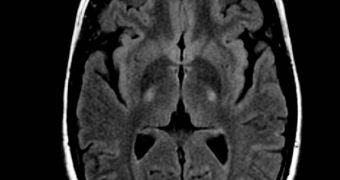A team of investigators managed to gain a little more insight into how amyotrophic lateral sclerosis (ALS), also known as Lou Gehrig’s disease, develops, and what type of cells are involved in this.
The group looked at cell populations called NG2+, which undergo significant changes in the brain of lab mice once ALS sets in. These cells develop very fast early on in life, and play a critical role in the brain.
One of their main functions is to insulate the neurons, thus allowing for the nerve cells to transmit electrical impulses faster and more efficiently. This sheet, called myelin, is severely affected by brain diseases such as Lou Gehrig’s.
In the new investigation, the group looked at how NG2+ immature cells develop into oligodendrocytes, the type of nerve cells that produce the myelin sheet.
The researchers did so by applying a color tag to this particular cell population, and then tracking it as it develops throughout the mice's lives.
In order to see how the cell populations develop in healthy and ALS mice, a group of rodents was genetically engineered to express a mutant form of the SOD1 gene, which has been linked to the development of the condition.
Mice in this group grew up to express all symptoms of the disorder. The experts analyzed the healthy and the ALS group in parallel, and looked at how NG2+ cells developed in both.
In the first group, it was determined that this population keeps what researchers called a “quiet” program of division, in the sense that new cells were gradually formed, replacing some of the old oligodendrocytes.
In the ALS group, the development of NG2+ cells goes awry, says Johns Hopkins University professor Dwight Bergles, PhD. He is an associate professor in the JHU Solomon H. Snyder Department of Neuroscience.
The scientist believes that a steady replacement of old cells is needed to maintain myelin. This is perhaps why the old oligos are gradually replaced by new ones in healthy mice. This doesn't happen in sick mice, he explains.
“In the model ALS mice we studied, it’s as though NG2+ cells step onto a high-speed treadmill. They undergo explosive division, morph more readily into abnormal-looking oligodendrocytes and then, uncharacteristically, those differentiated cells quickly die,” Bergles says.
“The brakes that normally hold these cells in check appear to be gone in ALS,” he adds. Details of the new work appear in the November 17 online issue of the esteemed scientific journal Neuron, Science Blog reports.
“This goes much further than simply confirming a negative finding about these mysterious cells. We’ve answered a question, but the new observation about the overgrowth could lead to an entirely new understanding of ALS,” says research associate Shin Kang, PhD.

 14 DAY TRIAL //
14 DAY TRIAL //